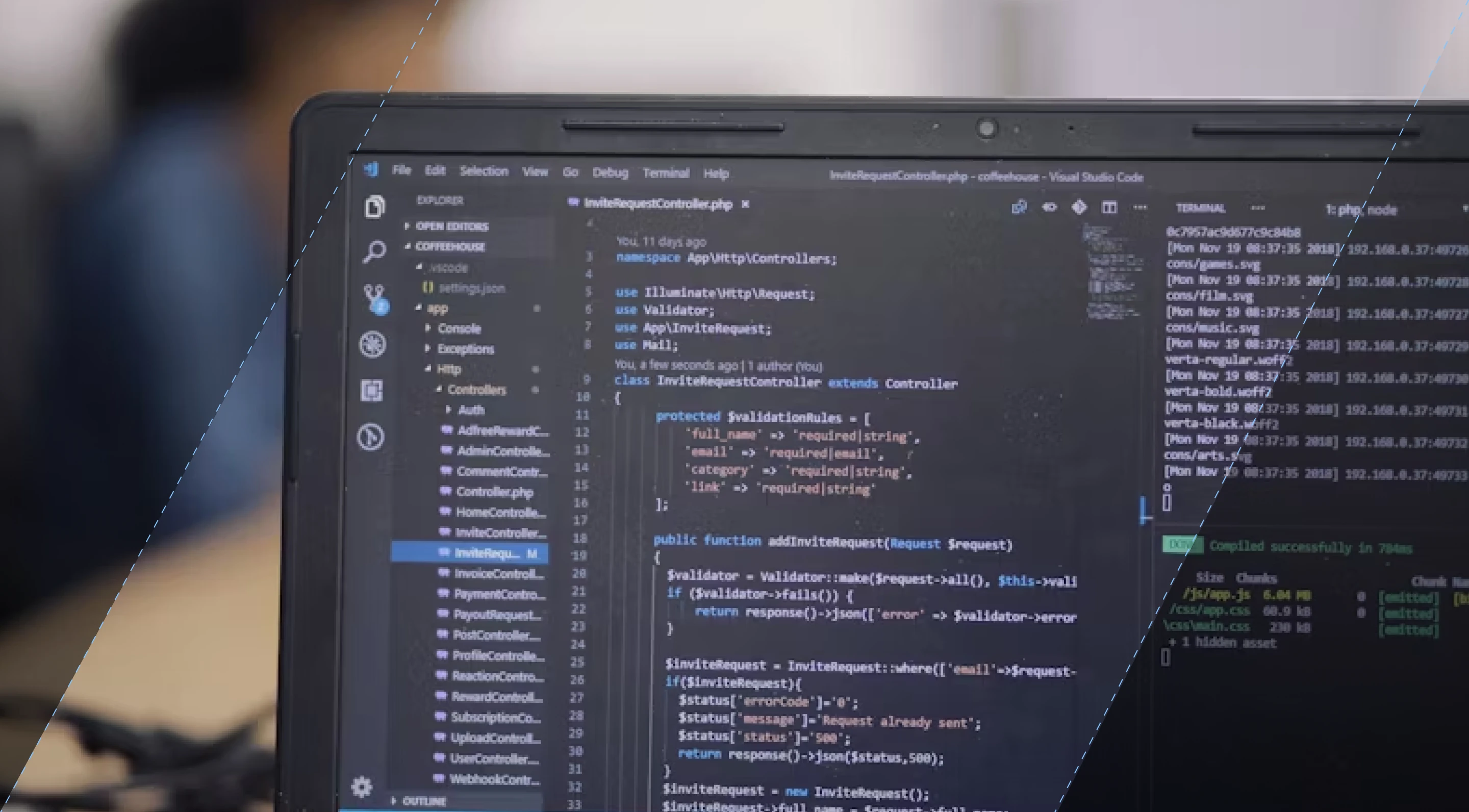SHARE
Software Outsourcing Market: Ultimate Guide 2025

Contents
Contents
The IT outsourcing market is projected to undergo substantial growth in 2024, fueled by numerous trends and developments. With a projected CAGR of 5.76% between 2022 and 2028, the market is poised for expansion.
One significant driver of this growth is the increasing adoption of cloud-based solutions in software outsourcing. The market size for cloud-based services, including data management and cybersecurity, is predicted to reach a staggering $141.2 billion by 2027.
Automation is also playing a vital role in software development, with executives recognizing its value in driving growth. In fact, more than 80% of business executives are accelerating plans to digitize work processes and deploy new technologies. Outsourcing can enable companies to harness the power of automation, enhancing efficiency and cost-effectiveness.
The Agile methodology, known for its flexibility and iterative approach, is gaining prominence in software outsourcing. By combining the advantages of outsourcing with Agile methodologies, businesses can streamline their development processes and improve collaboration with external partners.
Furthermore, quality assurance (QA) is gaining increased significance in software outsourcing. Companies are prioritizing the delivery of high-quality software products to their customers, recognizing the importance of meeting and exceeding expectations.
What Is Outsourcing?
Outsourcing is a business strategy where companies delegate specific tasks or functions to external service providers. By outsourcing certain functions, companies can leverage the expertise and resources of specialized service providers, allowing them to focus on their core competencies.
Outsourcing can involve various areas of business, such as IT services, customer support, manufacturing, or human resources. The goal of outsourcing is often to reduce costs, improve efficiency, access specialized skills, or enhance organizational flexibility.
In today’s dynamic business landscape, outsourcing has become a prevalent practice adopted by companies across industries. By partnering with external service providers, businesses can tap into a vast pool of expertise, streamline processes, and drive innovation.
What Is IT Outsourcing?
Definition of IT Outsourcing
IT outsourcing refers to the practice of delegating IT functions or services to external providers. This can include a wide range of activities such as:
- Software development
- Infrastructure management
- Network security
- Technical support
- Data management
By outsourcing these IT functions, companies can tap into specialized IT expertise, access the latest technologies, and reduce operational costs. IT outsourcing can be conducted within the same country (onshore), in neighboring countries (nearshore), or in countries with lower labor costs (offshore).
Outsourcing Statistics
Here are some interesting statistics about the software outsourcing market.
- It is forecasted that the IT Outsourcing market will generate revenues of approximately $512.50 billion in 2024.
- More than 75% of executives said they would outsource IT functions in 2022.
- Business process outsourcing is expected to reach a value of $620 billion by 2032.
- From 2024 to 2028, the market is anticipated to expand at a compound annual growth rate (CAGR) of 10.99%, culminating in a total market size of $777.70 billion by 2028.
- The projected expenditure per employee within the IT Outsourcing sector is expected to reach $146.10 in 2024. In North America, this number is expected to reach US$803.50.
- The United States is predicted to be the leading country in terms of revenue within this market, with an estimated $185.50 billion generated in 2024.
Forms of Outsourcing
In the world of outsourcing, there are various forms that companies can choose from to delegate specific tasks or functions to external outsourcing service providers. Understanding these different types of outsourcing can help businesses make informed decisions and find the right outsourcing solution for their needs.
Business Process Outsourcing (BPO)
BPO involves outsourcing non-core business functions to external providers. These functions can include customer service, payroll processing, human resources, and more. By outsourcing these non-core functions, companies can focus on their core competencies and improve overall efficiency.
Knowledge Process Outsourcing (KPO)
KPO focuses on outsourcing knowledge-intensive tasks that require specialized domain expertise. This can include research and development, legal services, financial analysis, and other high-value activities. KPO allows companies to tap into the expertise of specialized professionals and gain a competitive edge in their industry.
IT Outsourcing
IT outsourcing specifically focuses on outsourcing IT functions or services. This can include software development, infrastructure management, technical support, network security, and more. IT outsourcing enables companies to leverage external expertise, access the latest technologies, and reduce operational costs.
Each type of outsourcing offers unique advantages and considerations. By evaluating the specific needs of their business, companies can determine which form of outsourcing is the most suitable for their requirements.
IT Outsourcing Models
In the realm of IT outsourcing, there are different engagement models that companies can opt for based on their specific needs and requirements. These models provide varying degrees of collaboration and partnership with external service providers, offering flexibility and tailored solutions.
Overview of Different IT Outsourcing Engagement Models
Staff Augmentation Model
The staff augmentation model involves hiring external resources on a temporary basis to supplement your internal team. This model allows you to augment your workforce with specialized skills or additional manpower during peak workloads or specific projects. By leveraging a staff augmentation company, you can quickly scale up your capabilities without long-term commitments.
Dedicated Team Model
In the dedicated team model, you form a long-term partnership with an external team that works exclusively on your projects. This model provides you with a dedicated and cohesive team that aligns with your company’s objectives and seamlessly integrates with your internal operations. The dedicated team becomes an extension of your organization, ensuring continuity and fostering effective collaboration.
Project-Based Model
The project-based model focuses on outsourcing specific projects to external vendors who take on the complete development and delivery of the project. This model is suitable when you have well-defined project requirements and prefer external expertise to handle the entire project lifecycle. By outsourcing projects, you can benefit from specialized skill sets, efficient project execution, and reduced time-to-market.
Managed Services Model
The managed services model involves outsourcing the entire IT function or a specific area of IT management to an external provider. In this model, the service provider takes on the responsibility of managing and maintaining your IT infrastructure, ensuring its smooth operation and delivering the required services. This model allows you to offload the burdens of IT management and focus on your core business activities.
|
Engagement Model |
Key Characteristics |
|
Staff Augmentation Model |
Temporary hiring of external resources to supplement the internal team |
|
Dedicated Team Model |
Long-term partnership with an external team exclusively working on your projects |
|
Project-Based Model |
Outsourcing specific projects to external vendors for complete development and delivery |
|
Managed Services Model |
Outsourcing the entire IT function or specific IT management areas to an external provider |
Each IT outsourcing model offers unique advantages and can be chosen based on your specific needs and goals. Understanding these models can help you make informed decisions about partnering with external service providers and optimizing your IT outsourcing strategy.
Benefits of IT Outsourcing
Outsourcing IT services offers numerous advantages for companies, providing cost savings, access to specialized skills, scalability, enhanced security, and improved focus on core competencies.
- Cost Savings: By outsourcing or nearshoring IT services, companies can reduce labor and infrastructure costs, leveraging the economies of scale and expertise of external providers. According to software outsourcing statistics, 59% of businesses view software development outsourcing as a strategy for cost reduction.
- Access to Specialized Skills: IT outsourcing allows companies to tap into a global talent pool of specialized IT professionals who possess in-depth knowledge and experience in specific technologies or domains.
- Scalability: Companies can scale their operations more easily by outsourcing IT services, as they have the flexibility to quickly ramp up or down the resources and expertise required for their projects.
- Enhanced Security: External IT providers often have advanced security measures and expertise to protect data and systems, reducing security risks for the client.
- Improved Focus on Core Competencies: By outsourcing IT services, companies can divert their internal resources and attention to their core competencies and strategic activities, enhancing their overall business performance.
IT Outsourcing Risks
Potential Risks and Challenges of Outsourcing IT Services
When deciding to outsource IT services, it’s crucial for companies to be aware of the potential risks and challenges that come with it. Understanding these risks can help companies address them effectively and mitigate any negative impact on their operations and reputation.
Potential risks of IT outsourcing include:
- Loss of control: One of the main challenges of outsourcing is the loss of direct control and visibility over the outsourced activities. This can impact decision-making processes, quality control, and the ability to quickly address any issues that may arise.
- Lack of understanding of the client’s business: When outsourcing IT services, there is a risk that the external provider may not fully understand the client’s specific needs or align with their strategic goals. This can result in the outsourced services not meeting expectations or delivering the desired outcomes.
- Communication barriers: Language or cultural differences can pose challenges to effective collaboration and understanding between the client and the external provider. Miscommunication can lead to delays, misunderstandings, and subpar performance.
- Intellectual property concerns: Sharing sensitive or proprietary information with external providers raises concerns about the protection of intellectual property. It is essential to have clear contractual agreements and implement security measures to safeguard data and assets.
- Dependency on external providers: When relying on external providers for critical IT services, there is a risk of dependency. If the relationship with the provider becomes strained or if they fail to deliver according to agreed terms, it can have a significant impact on the client’s operations and reputation.
By proactively addressing these risks and implementing appropriate measures, companies can minimize the potential negative consequences of outsourcing IT services and ensure a successful partnership with their chosen external provider.
IT Outsourcing Trends
Emerging Trends in IT Outsourcing
– Robotic Process Automation (RPA): The rise of RPA in IT outsourcing is a significant trend. RPA involves using software robots or artificial intelligence to automate repetitive tasks and processes, improving efficiency and reducing costs.
– Cloud Computing: Another emerging trend in IT outsourcing is the adoption of cloud computing. This trend enables companies to leverage scalable and flexible computing resources without the need for extensive infrastructure investments. Cloud computing offers increased agility, cost-effectiveness, and improved accessibility to data and applications.
– DevOps Practices: The growth of DevOps practices in IT outsourcing is on the rise. DevOps aims to improve collaboration and alignment between development and operations teams, enabling continuous delivery, faster deployment, and enhanced agility. By integrating development, testing, and operations, DevOps helps optimize software development and operational processes.
– Telehealth Growth: A big trend in healthcare IT outsourcing is the increase in telehealth services, which let doctors treat patients over the internet. This is really important now as it helps patients get care without having to travel, especially when it’s hard to see a doctor in person. Outsourcing helps healthcare providers set up telehealth quickly, making it easier for patients to have video visits with their doctors and get health checks using their phones or computers. This way, more people can get the care they need, safely and conveniently.
– Agile Methodologies: Agile methodologies, such as Scrum or Kanban, are becoming increasingly prevalent in IT outsourcing. These methodologies promote iterative and collaborative project management, allowing for more flexibility, adaptability, and customer-centricity. Agile practices enable faster feedback cycles and the ability to respond quickly to changing market demands.
– Data Security and Privacy: The increasing focus on data security and privacy is shaping the outsourcing landscape. Companies are prioritizing compliance with regulations and implementing robust data protection measures. Data security and privacy considerations are becoming critical factors in selecting outsourcing partners.
Conclusion
In conclusion, IT outsourcing is a strategic business practice that offers numerous benefits for companies. By leveraging external expertise and resources, companies can reduce costs, access specialized skills, and focus on their core competencies. This allows for increased efficiency and improved business performance.
There are different forms of outsourcing available, with IT outsourcing specifically focusing on delegating IT functions or services to external providers. This enables companies to tap into a global talent pool and leverage the latest technologies without the need for extensive infrastructure investments.
However, it is important to be aware of the risks and challenges associated with IT outsourcing. Loss of control, communication barriers, and intellectual property concerns can impact the success of outsourcing initiatives. Therefore, it is crucial to choose reliable and trustworthy external providers and establish clear contractual agreements to mitigate these risks.
Looking ahead, emerging trends such as Robotic Process Automation (RPA), cloud computing, DevOps, and Agile methodologies are shaping the future of IT outsourcing. By staying updated with these trends and understanding the evolving landscape, companies can make informed decisions and effectively leverage outsourced IT services to drive their business success.
If you are looking to outsource to a trusted software development company, read more about Flatirons’ software development outsourcing services.
Frequently Asked Questions
What is the projected growth of the IT outsourcing market in 2024?
The IT outsourcing market is expected to experience significant growth in 2024, with a projected CAGR of 5.76% between 2022 and 2028.
What is outsourcing?
Outsourcing is a business strategy where companies delegate specific tasks or functions to external service providers.
What are the benefits of outsourcing for companies?
Companies outsource to reduce costs, improve efficiency, access specialized skills, or enhance organizational flexibility.
What are the different forms of outsourcing?
There are different forms of outsourcing, including business process outsourcing (BPO), knowledge process outsourcing (KPO), and IT outsourcing.
What are the different engagement models in IT outsourcing?
The different engagement models in IT outsourcing include the staff augmentation model, dedicated team model, project-based model, and managed services model.
What are the potential risks and challenges of outsourcing IT services?
The potential risks of outsourcing IT services include loss of control, lack of understanding of the client’s business, communication barriers, intellectual property concerns, and dependency on external providers.
What are the emerging trends in IT outsourcing?
Emerging trends in IT outsourcing include the rise of Robotic Process Automation (RPA), cloud computing, DevOps practices, Agile methodologies, and increased focus on data security and privacy.
Software Development Outsourcing Solutions
Outsource your software development to Flatirons for quality, efficiency, and innovation.
Get the CEO's Take
Handpicked tech insights and trends from our CEO.
Software Development Outsourcing Solutions
Outsource your software development to Flatirons for quality, efficiency, and innovation.
Get the CEO's Take
Handpicked tech insights and trends from our CEO.

Perl vs Python: Choosing the Right Scripting Language
Flatirons
Apr 20, 2025
IoT Database: Manage Connected Device Data Efficiently
Flatirons
Apr 14, 2025
Proof of Concept Template: A Step-by-Step Guide
Flatirons
Mar 26, 2025
Objective C vs Swift: Which is Better for iOS App Development?
Flatirons
Mar 25, 2025
Scala vs Kotlin: Comparing the Functional Programming Giants
Flatirons
Mar 22, 2025
IoT Smart City Solutions: Transforming Urban Living
Flatirons
Mar 17, 2025